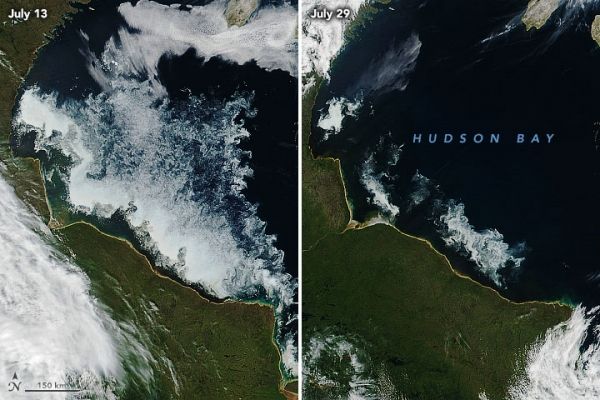Shallow and surrounded by land—yet considered a sea of the Arctic Ocean—Hudson Bay freezes over completely in the winter and thaws for a period in the summer. Usually all of the sea ice melts between June and August, and the bay begins to freeze over again in October or November.
As the sea ice breaks up, satellites often capture stunning natural-color images of the changing conditions. For instance, the Visible Infrared Imaging Radiometer Suite (VIIRS) on Suomi NPP captured this pair of images highlighting the drawdown of sea ice between July 13 and July 29, 2020. While many parts of the Arctic saw unusually rapid melting and low levels of ice through July 2020, conditions were a bit more hospitable to sea ice in southwestern Hudson Bay.
The distribution and rhythms of the sea ice plays a central role in the lives of the animals of Hudson Bay, especially polar bears. When the bay is topped with ice, polar bears head out to hunt for ringed seals and other prey. When the ice melts in the summer, the bears retreat to shore, where they fast until the ice returns.
Continue reading at NASA Earth Observatory
Image via NASA Earth Observatory


